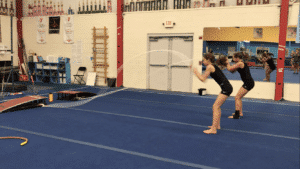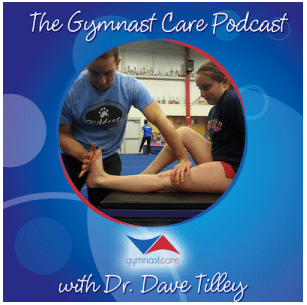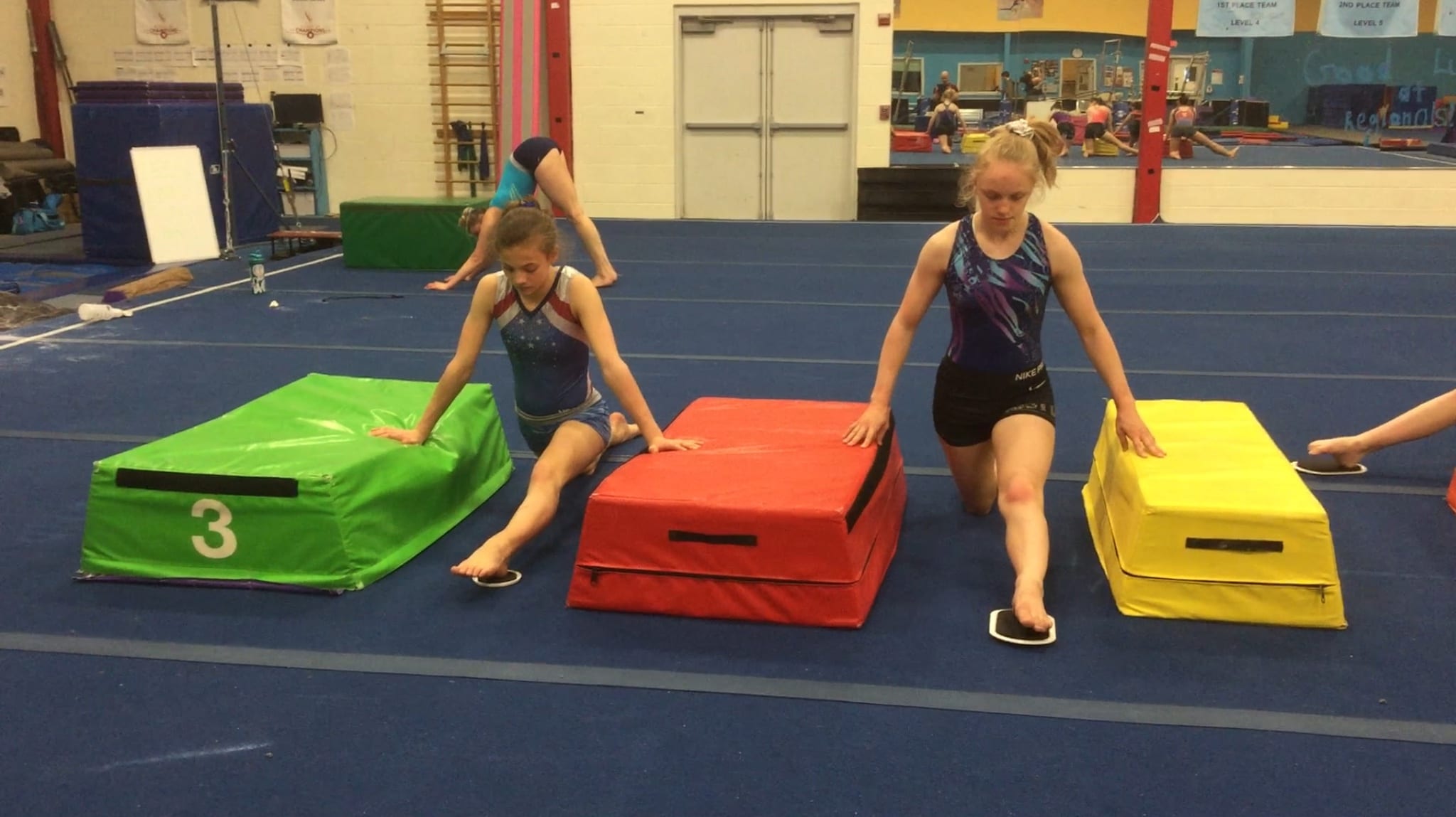Build Gymnastics Routine Cardio for Season with My Favorite New Circuit
Hey everyone! After a crazy few months of traveling, speaking, and working on some monster projects I’m really excited to have time to write some new blog content. I’ve had a lot of time to brainstorm some new ideas based on the gymnasts that I am treating in the clinic, but also what I have learned in the gym.
Today I want to share with you one of my absolute favorite cardio workouts we have been using with our gymnasts. We have been doing versions of this workout for the last 6 weeks as we prepare for the season.
Before giving the specifics on this, remember you can download my entire guide to Gymnastics Cardio 100% for free here,

The Gymnastics
Cardio Guide
- Outlines the why and how for training cardio in gymnastics
- Explains the basic energy systems, how to train them, and why it's crucial to prepare gymnasts for routines
- Gives sample workouts for summer, fall and in season to use
We take our privacy seriously and will never share your information. Click here to read our full privacy policy.
Compared to the last few years, we have seen huge improvements in our gymnast’s ability to make it through their first few weeks of endurance and floor routines. I will share the workout and video below, and then break down why I think these types of workouts are so crucial for gymnasts to perform to help prepare them for routines.
1 Minute On Fast Twitch / 2 Minutes Recovery Slow Twitch
- 5 Rounds Total (Groups of 3 to allow 2 min rest)
- 20 seconds of max effort medball / rope slams
- 20 seconds of jump Cast Handstands
- 20 seconds of max effort sprints
- 2 minute rest/active recovery of very slow lunge to raise the roof to assist in fatigue clearance
Here is the video to show, please forgive my lack of a voice (Alumni weekend at Springfield) and the small hiccup of two girls running into each other, haha.
There have been a few versions of these workouts that we have done, with slightly different work to rest ratios, exercises performed, and the number of intervals performed. That being said, there are a few main reasons that I have been using these types of workouts more. These include
- Building fast twitch muscle fiber capacity to perform in maximal efforts in movements specific to gymnastics.
- I’m a huge fan of developing the specific energy systems and muscle fibers being used in gymnastics skills way before we ask gymnasts to do a lot of full routines. I think this is both for a safety concern of not getting hurt early in the season, but also for an optimal performance. The 3 exercises were chosen for a specific reason, and I think transfer to gymnastics skills very well.
- Medball / Rope Slams – shape changing and explosive hip power seen across all taps on bars, tumbling on floor, beam series, vaulting shapes
- Cast Handstands – for bar cast handstands and shape control under fatigue as is crucially needed for bars
- Sprints – Floor and Vault explosive power
- I’m a huge fan of developing the specific energy systems and muscle fibers being used in gymnastics skills way before we ask gymnasts to do a lot of full routines. I think this is both for a safety concern of not getting hurt early in the season, but also for an optimal performance. The 3 exercises were chosen for a specific reason, and I think transfer to gymnastics skills very well.
- It combines upper body, lower body, and core power work
- Something I was 100% guilty of as a younger coach was just going absolutely nuts on power development for the legs in gymnasts I coached but forgetting that the core and upper body of gymnasts need an equal amount of power development. I think this is something commonly missed by many coaches or rehab professionals helping gymnasts. For this reason, I chose med ball slams to be a static lower body with moving core/upper body power, cast handstands to be a static upper body with moving core/lower body, and sprints as a more lower body finisher. I think this variety of movements best prepares gymnasts for gymnastics skills/routines, but also helps encourage full body development.
- It trains slower twitch fibers to assist in the clearance of fatigue following the max effort interval in fast twitch fibers.
- This is a nerdy paragraph so skip if your no on this wavelength, no offense taken. I think that this is one of the most important things I have learned from my friends Chris Hinshaw and Tiffany Parker, who are world class / Olympic level runners and coaches. They are endurance and sprint coaches to hundreds of world class and professional athletes, and I’m lucky they have taught me a ton.
- One of the best ways we can help train athletes to delay fatigue and in turn theoretically sustain higher power outputs (think last floor pass in routine, bar dismount, beam dismount).
- This is not a perfect science application, but in a nutshell theoretically, we can train the slow twitch muscle fibers to clear lactate that has build up in an anaerobic bout to help reduce the global amount of fatigue present. The more we can buffer the biproduct of anaerobic alactic /lactic bouts, the higher power output we can sustain in the faster twitch muscles to perform another bout, like big tumbling passes or bar release /dismount skills at the end of a routine. The more we can develop in the moment main buffering capacities, as well as help tune in the glycolytic alactic / lactic system to tolerate heavy fatigue in acidic environments, the better. The main goal of the summer was developing general aerobic capacity via interval and longer sessions, and now we are trying to funnel those adaptations
If your looking for the books and literature I like reading for these types of programs, here are two really great resources.
The Physiology of Training For High Performance
Strength and Conditioning: Biological Principles and Practical Applications
Concluding Thoughts

I will openly say that I designed this workout based on a mixture of the science I have read, the expert coaching opinions of friends of mine, and a bit of theory. I think that’s where most things in the gym start for me, as there isn’t a ton of scientific research on metabolic / energy systems programming for gymnasts.
But, the main two goals are to not only help the performance of one 90 second – 2 minute bout of a routine but also enhance the ability to recover between routine bouts to enhance training at practices 95-10 routines per night different events) and also at a meet (recover from bars for beam, beam for floor, etc). I’m excited to be back with some new content, so hope this helps!
Have a great week!
Dave Tilley DPT, SCS, CSCS











